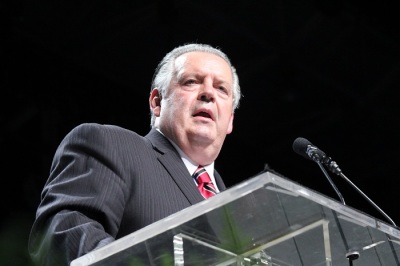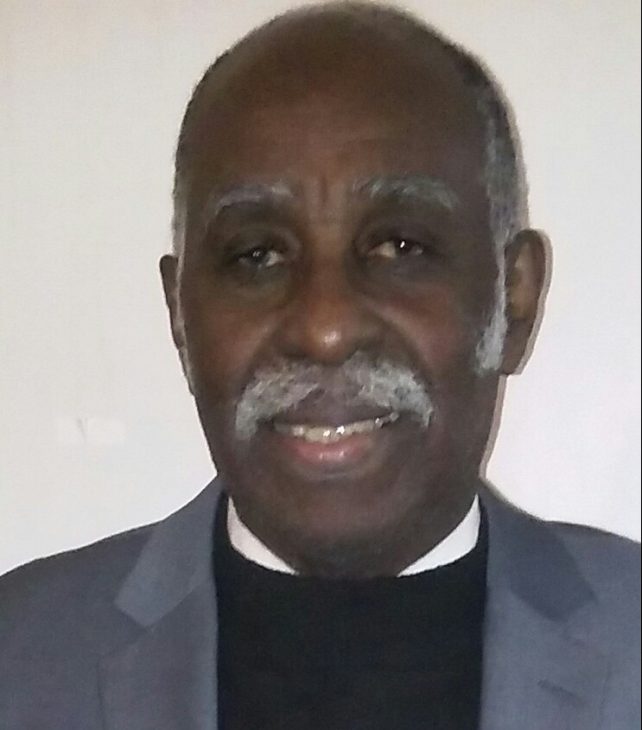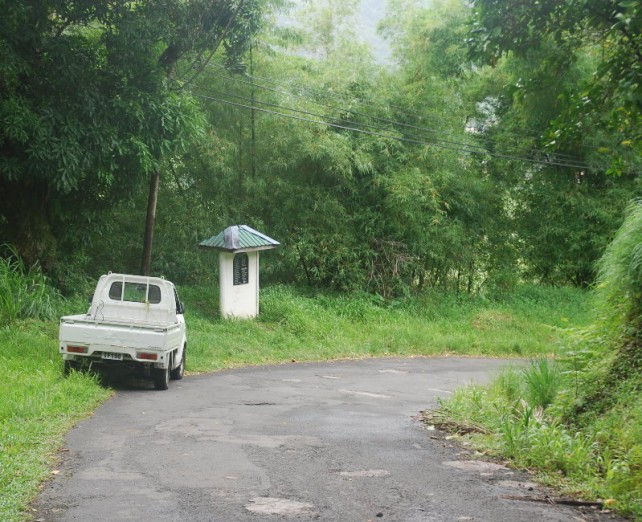Brookes, a mixed-media artist who studied printing at the Royal College of Art, was last seen in Graphic Content in 2017 talking about crayons, the Pet Shop Boys and Charles Bonnet Syndrome. Here, he talks medieval religion, Margery Kempe, coronavirus and the pleasure of embroidery:
Gareth, to start with, can you tell us what was the dancing plague?
Dancing plagues occurred throughout the medieval period all over Europe. People were suddenly seized by the compulsion to dance for days or even weeks on end and the dancing spread like an infectious disease. The dancers appeared to be in a trance and would keep dancing until they collapsed or in some cases died.
We know very little about most of the dancing plagues, but the Strasbourg outbreak of 1518 was one of the last and best documented.
What was it about the story that convinced you there was a graphic novel in it?
As soon as I found out about it, I wanted to draw it, despite the amount of complicated crowd scenes involved. As I learnt more, I realised there were a lot of parallels between their times and ours (even before coronavirus), and the characters began to take shape.

How did you immerse yourself in the medieval mind?
Firstly, I read a lot. There is a book by John Waller called A Time to Dance, a Time to Die, which is a really good guide to the 1518 outbreak. I did a lot of research for my main character Mary, who I based on two medieval mystics: Christina the Astonishing and Margery Kempe. Kempe in particular is someone that everyone should know about. Her book, The Book of Margery Kempe, was the first autobiography written in the English language, and is a vivid, funny account of a brave, eccentric, but ultimately quite ordinary woman, trying to live the extraordinary life of a mystic.
I contacted Anthony Bale who is Professor Medieval Studies at Birkbeck, University of London. He was enthusiastic about the project from the outset and helped me make the book as historically accurate as possible. He suggested I draw as much from primary sources as possible, so I read Rabelais and Francois Villon to get the tone right.
I drew from visual sources across the medieval period too, but most notably Bruegel the Elder (who was born shortly after the Strasbourg outbreak and made drawings of a dancing plague) and Hieronymus Bosch whose Garden of Earthly Delights has exactly the kind of demented atmosphere I hoped to capture in some of my dancing scenes.
It’s worth noting that 1518 is right at the very end of what we think of as the medieval period, and a lot of references I used where from an earlier time. I used a bit of creative license here because I felt that dancing plagues were a quintessentially medieval thing, and the people I’m depicting in the book, who are mainly peasants, certainly had a medieval way of looking at things.
What were the ideas/beliefs that were hardest to understand?
Getting to grips with the situation of female medieval mystics of the period was difficult to understand. These women led precarious lives that depended on whether they could get bishops and priests to support them. If so, they often became an anchoress and were walled up in a cell to live a life of prayer and holy contemplation for the rest of their lives. On the other hand, they could be called a heretic and imprisoned or even put to death. Margery Kempe was an example of a mystic that divided opinion in this respect. She was constantly having to escape from those who regarded her as a heretic, but also had powerful supporters who helped her out on her travels.
Read More: Adam Luke Hawker on his coronavirus fable Together
Read More: Michel Rabagliati on turning his life into graphics
Some things don’t change though, in particular male domination and suppression of women.
That’s true, although it’s not a simple picture. For example, during the medieval period it was not uncommon for a woman to own a business or have property. These assets would be seen as separate from her husbands. In the church, women could hold positions of seniority over men.
Women also had access to law. The issue of “The Marriage Debt” was an interesting example. This was where a spouse, male or female, had a right to expect sex from a partner, otherwise the marriage could be annulled. There are many examples from the ecclesiastical courts of women suing for divorce on grounds of a husband’s inability to perform this duty. A wife could even stop her husband from going on the crusades if she objected to being deprived of the sex he “owed” her.
But it’s true that the majority of women had little control over their lives. There was a huge amount of misogyny embedded in religious beliefs. The idea of a woman being responsible for original sin was something constantly emphasised by the church. As well as belief in witchcraft – an accusation which could lead to imprisonment or death – there were lots of weird beliefs around menstruation, including, for example, that menstrual blood could poison crops.
It’s important to understand that medieval people wouldn’t recognise our conception of gender. If anything, the gender stereotypes we live with that are the root of the misogynistic attitudes in today’s society come from a romantic Victorian reinterpretation of another medieval idea, that of chivalry, which sees women as “damsels in distress” in need of protecting and saving. You’re right though, ultimately it all amounts to the same thing.
How key is the religious belief system of the time to understanding how people behaved?
Really important. People in this period really believed in hell, but were almost more afraid of purgatory, which you could get stuck in for thousands of years. If the prayers of the clergy weren’t effective because the city was immoral, or the clergy themselves were engaged in licentious behaviour, then even the most upright, God-fearing citizens would find themselves stuck in purgatory. It really terrified them.
Such ineffective prayer could also lead to the eternal war between heaven and hell becoming unbalanced. Saints (such as St Vitus, who was seen as responsible for dancing plagues) might give permission for devils to run amok. So, when the clergy were seen to be misbehaving and engaging in corruption, people feared for their souls and saw danger everywhere.
Are the demons drawn from historical research or your own imagination?
I did a lot of research into medieval art, particularly demons, I did some sketching at the V&A and from prints by Bosch. Before long I could improvise demons from different elements in my sketches. So, really, most of them are a combination of research and imagination.

When did you first get the idea of including mixed media work in your graphic fiction?
I went to the Angouleme International Comics Festival in 2010. For those who don’t know, that’s a huge comics festival in France. I was totally blown away by the different approaches to comics I saw over there. People using etching, woodcut, painting, screen printing and textiles to make comics. It’s a completely different attitude to the form. In France there’s no question that comics are an art form equal to any other. When I got back, I started introducing different ways of working that I had enjoyed at art school into my comics.
How did you want to use it here? And how much work does it take?
This book is made using pyrography and embroidery on calico. Basically, it’s a soldering iron with pyrographic attachments allowing you to burn onto a surface, in this case fabric. It’s a really nice way of working because you’re never completely in control of the line. I used a flat attachment to get the tones and a very fine one to do things like the cobbles on the street. It isn’t much more time-consuming than using a pen, although some of the darker tones do take a while, and I worked in A2 (so each panel is A4 size) which increased the work!
The mystical visions are represented using embroidery, which is a time-consuming process, but doesn’t really feel like work. Embroidery is a very soothing and meditative activity, and you can watch TV and talk to people while you’re doing it.
Were you working on the book during this pandemic? Did you feel any resonances between then and now?
Yes! I was about two-thirds of the way through when the pandemic started. There is a lot of parallels between then and now. I recognised the same blaming of minority groups, the same superstition, the same attitude of the authorities who both initially went for a “herd immunity” approach. There doesn’t seem to me to be much progress in thinking an illness is caused by 5G rather than by demonic possession.

I don’t get the sense that you would like to have been around in the 14th and 15th centuries?
It was a bleak existence, but I think it would have been quite an interesting time. It was a point in between the medieval ways of thinking and the new more scientific approach of the Renaissance. Change in Europe was being fuelled by technology such as the increasingly available printing press. When I think of my internet-less childhood, and the future it seems we are heading towards, I think that’s another respect in which we live in similar times.
What is your take on the cause of the dancing plague? Mass hysteria? Is there a modern equivalent?
I don’t think there’s a simple answer and I don’t really try and speculate too much in the book, like all good mysteries, it should (and probably will) remain unsolved.
I think that maybe there was an element of unconscious protest or civil disobedience involved. I think the dancing plague would have been interpreted as a failure of the clergy to do its job and would have cost the authorities a great deal of money to deal with. The people of Strasbourg at the time had suffered a number of calamities, such as crop failure and other plagues, while, at the same time, witnessing an incompetent governance of the city and a corrupt, greedy and licentious clergy.
They had completely lost faith in the elites to look after their wellbeing, both physical and spiritual. Again, much like our times.
What are you working on next?
Right now, I need a bit of a rest! I tend to make shorter, experimental small press work in between graphic novels, so I’ll probably do something along those lines.
What is the last great graphic novel you read?
Breakwater by Katriona Chapman. It’s a really beautifully drawn and involving read about dealing with self-destructive behaviour. It doesn’t offer easy answers and stays with you a long time after you close the book.
The Dancing Plague, by Gareth Brookes, SelfMadeHero, £15.99










